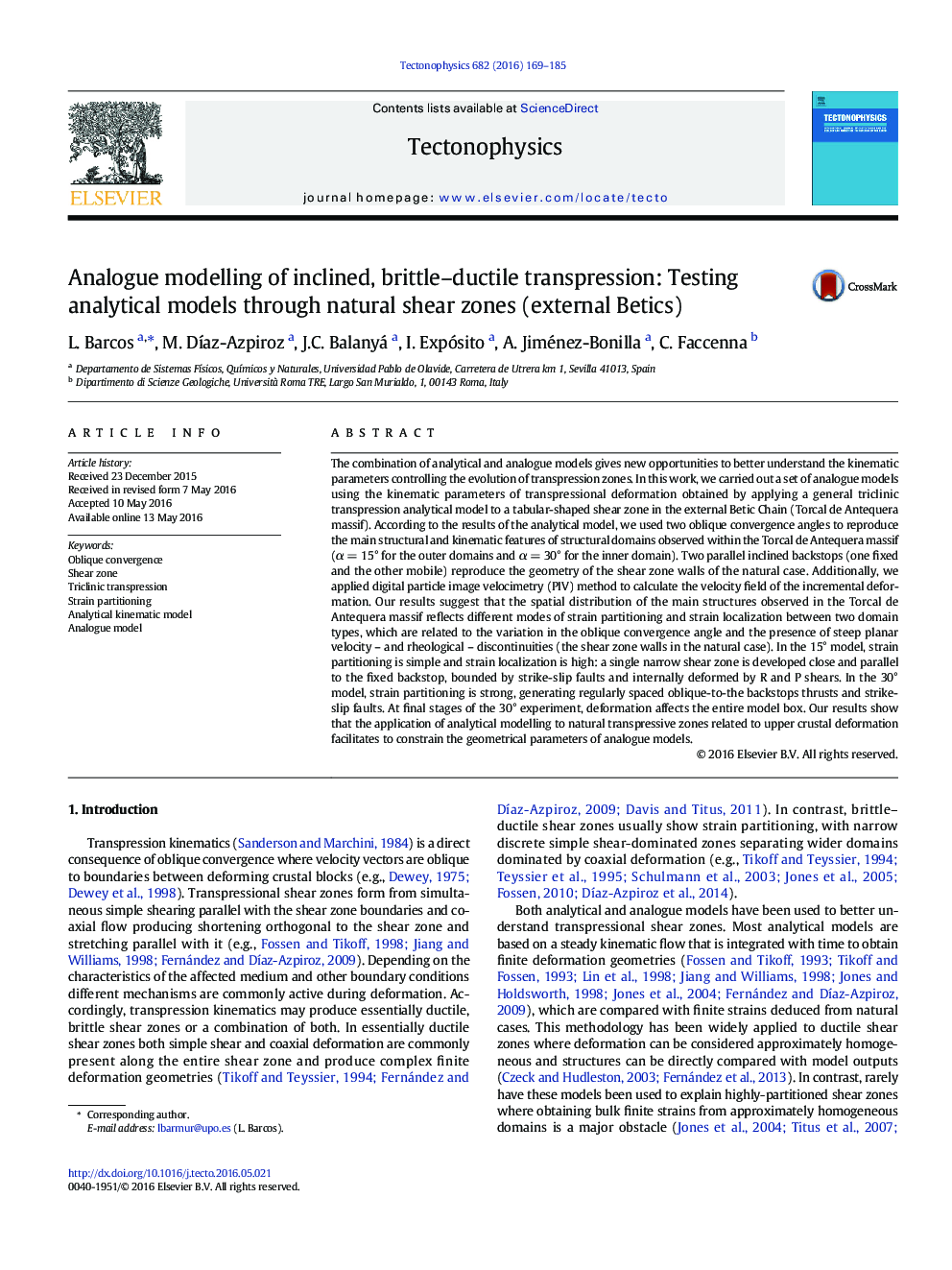| کد مقاله | کد نشریه | سال انتشار | مقاله انگلیسی | نسخه تمام متن |
|---|---|---|---|---|
| 4691311 | 1636716 | 2016 | 17 صفحه PDF | دانلود رایگان |
• Analytical and analogue models are combined to analyse a transpressive shear zone.
• Our models represent tabular shear zones with oblique convergence angle of 15°–30°.
• Presence and attitude of planar rheological boundaries favour strain localisation.
• The oblique convergence angle controls the localisation and partitioning of strain.
The combination of analytical and analogue models gives new opportunities to better understand the kinematic parameters controlling the evolution of transpression zones. In this work, we carried out a set of analogue models using the kinematic parameters of transpressional deformation obtained by applying a general triclinic transpression analytical model to a tabular-shaped shear zone in the external Betic Chain (Torcal de Antequera massif). According to the results of the analytical model, we used two oblique convergence angles to reproduce the main structural and kinematic features of structural domains observed within the Torcal de Antequera massif (α = 15° for the outer domains and α = 30° for the inner domain). Two parallel inclined backstops (one fixed and the other mobile) reproduce the geometry of the shear zone walls of the natural case. Additionally, we applied digital particle image velocimetry (PIV) method to calculate the velocity field of the incremental deformation. Our results suggest that the spatial distribution of the main structures observed in the Torcal de Antequera massif reflects different modes of strain partitioning and strain localization between two domain types, which are related to the variation in the oblique convergence angle and the presence of steep planar velocity – and rheological – discontinuities (the shear zone walls in the natural case). In the 15° model, strain partitioning is simple and strain localization is high: a single narrow shear zone is developed close and parallel to the fixed backstop, bounded by strike-slip faults and internally deformed by R and P shears. In the 30° model, strain partitioning is strong, generating regularly spaced oblique-to-the backstops thrusts and strike-slip faults. At final stages of the 30° experiment, deformation affects the entire model box. Our results show that the application of analytical modelling to natural transpressive zones related to upper crustal deformation facilitates to constrain the geometrical parameters of analogue models.
Journal: Tectonophysics - Volume 682, 6 July 2016, Pages 169–185
